Project overview
Hawthorne Community Center has served near westside Indianapolis residents as a multi-service center for over 80 years. In 2007, Local Initiatives Support Corporation (LISC) adopted a new strategic plan to realign programs and resources in a way that promotes neighborhood-led comprehensive community development. Comprehensive community development addresses neighborhood life as a whole, by understanding that neighborhoods are more than housing units, and that their needs are critical to lasting, positive neighborhood transformation.
Supporting the comprehensive community development strategy, a team of design researchers from Indiana University Herron School of Art and Design applied participatory design research methods and developed a series of engagement tools that enabled Hawthorne Community Center members to participate in a people-centered design process. This process aimed to develop an understanding of the Hawthorne users’ experiences and provide actionable insights for future development through LISC.
Research Goals
Our research group engaged with Latino families who participated within the Working Families’ Program at the Hawthorne Community Center. Through our partnership with this specific group at Hawthorne, we explored the everyday lives of our partner families, and how they were empowered or relied on the Hawthorne Center for their needs and desired experiences. By doing this, our goal was to gain deep insight into both their unique experiences as clients of the Hawthorne Center, and their broader experiences as family and community members.
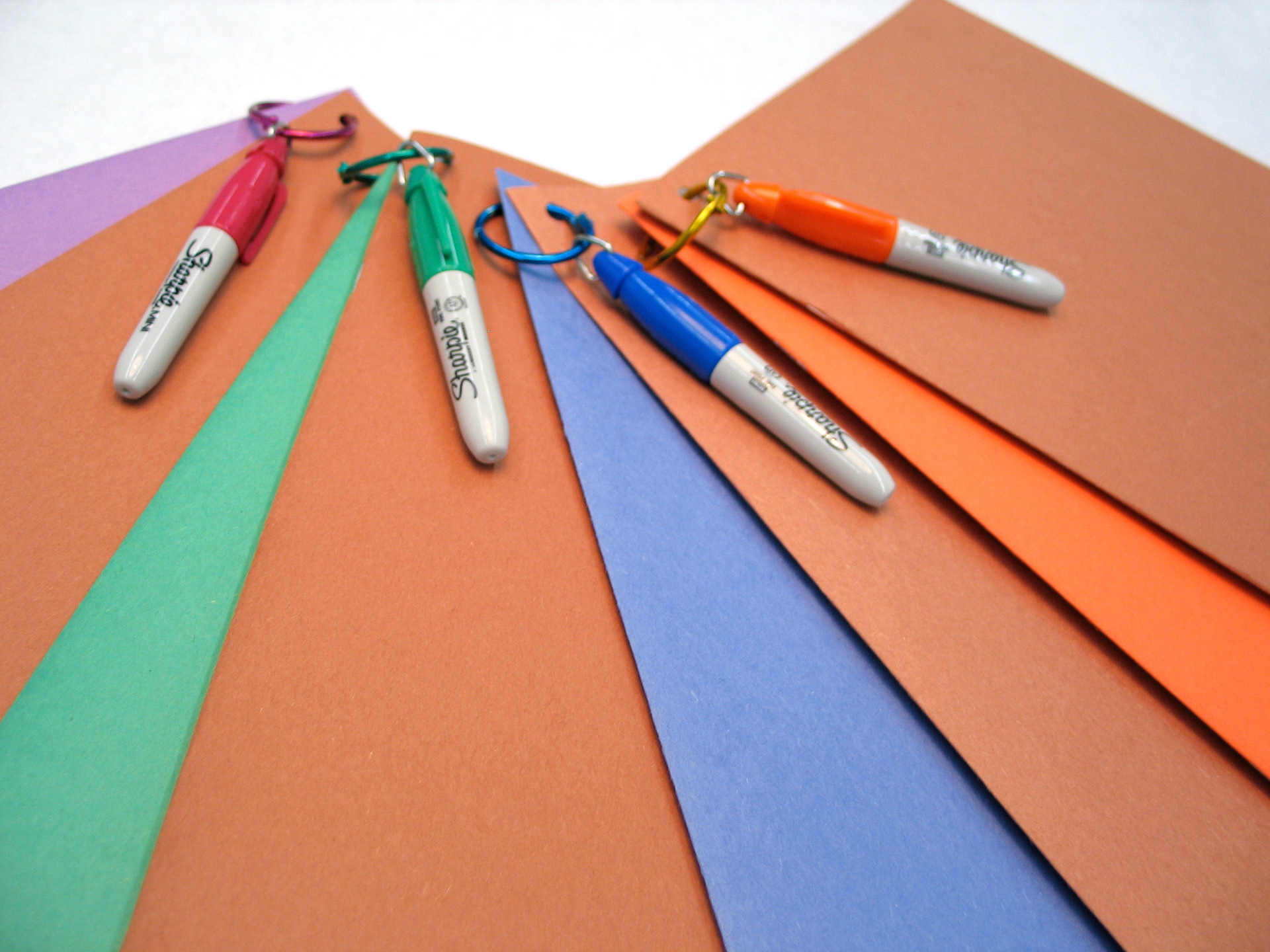

Approach
The tools created to explore family interaction took the form of a generative visual diary (pictured above). While these tools were sent home with the family members, much like a cultural probe, they were asked to create drawings in response to their daily routines, which made the tool also function generatively. Specifically, the family was asked to work on their diaries together (as much as possible), preferably in the environment described on each page.
Each family member was given two books — personalized by color and name on the inside front cover. The two books each had their own focus: the first explored the families typical day, while the second explored their ideal day. Each book presented three environments. The typical day book asked them to respond in drawings to prompts about their mornings at home, their experience in the car, and their experience at Hawthorne. The prompts in the ideal day book included an evening at home, driving to a location of their choosing, and thinking about who they would meet on the perfect day. For each of these scenarios, they were asked to draw pictures about what they were doing, seeing and hearing (pictured below).

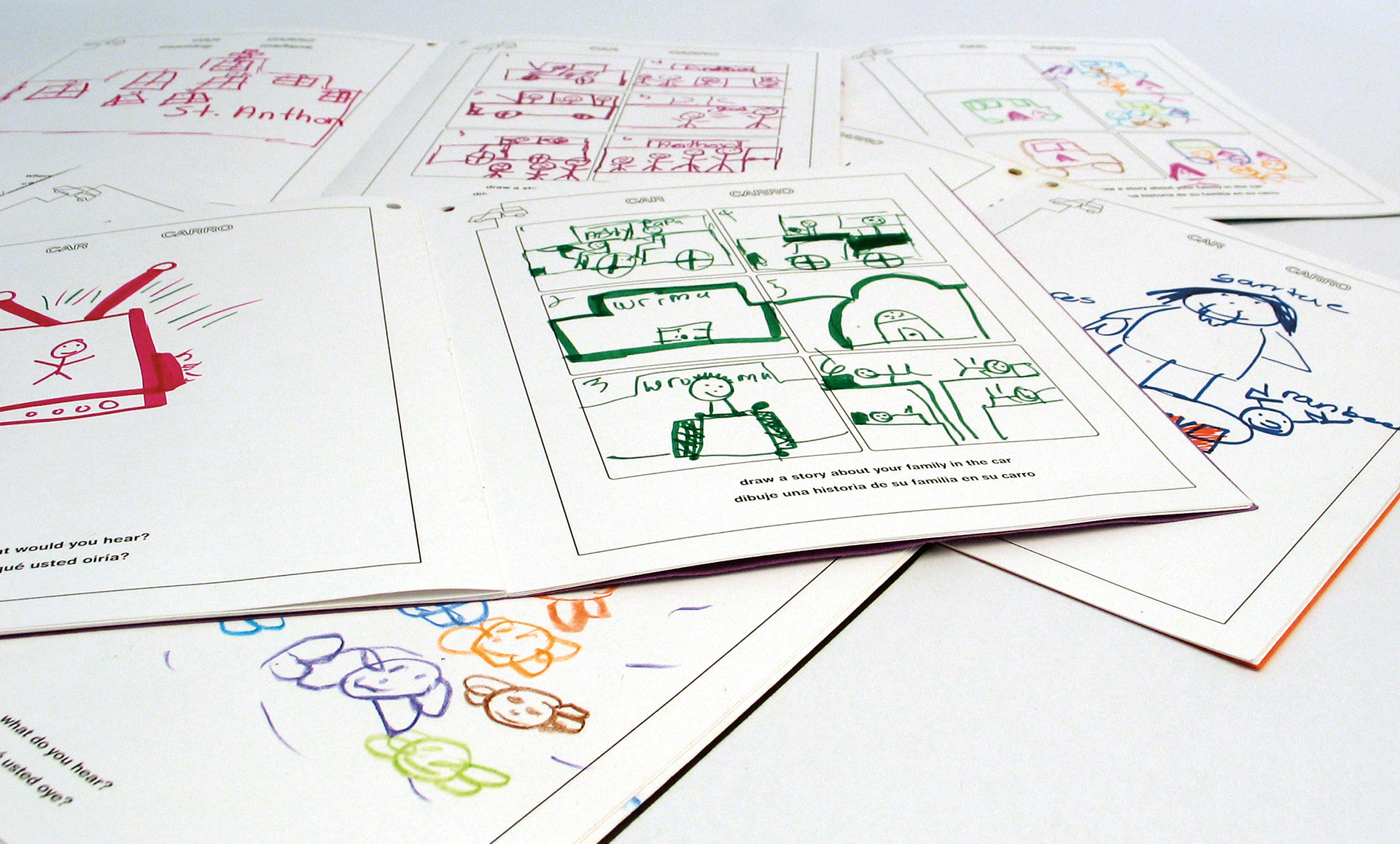
Data Analysis and Synthesis
Using the data provided by participants, we analyzed it by describing the information, then interpreting the information, and finally identifying opportunities based on the descriptions and interpretations. To do this, we utilized a color-coded tagging system to better help identify our various findings. A user experience map was then developed to demonstrate the families typical daily experience, and the types of interactions they participated in.
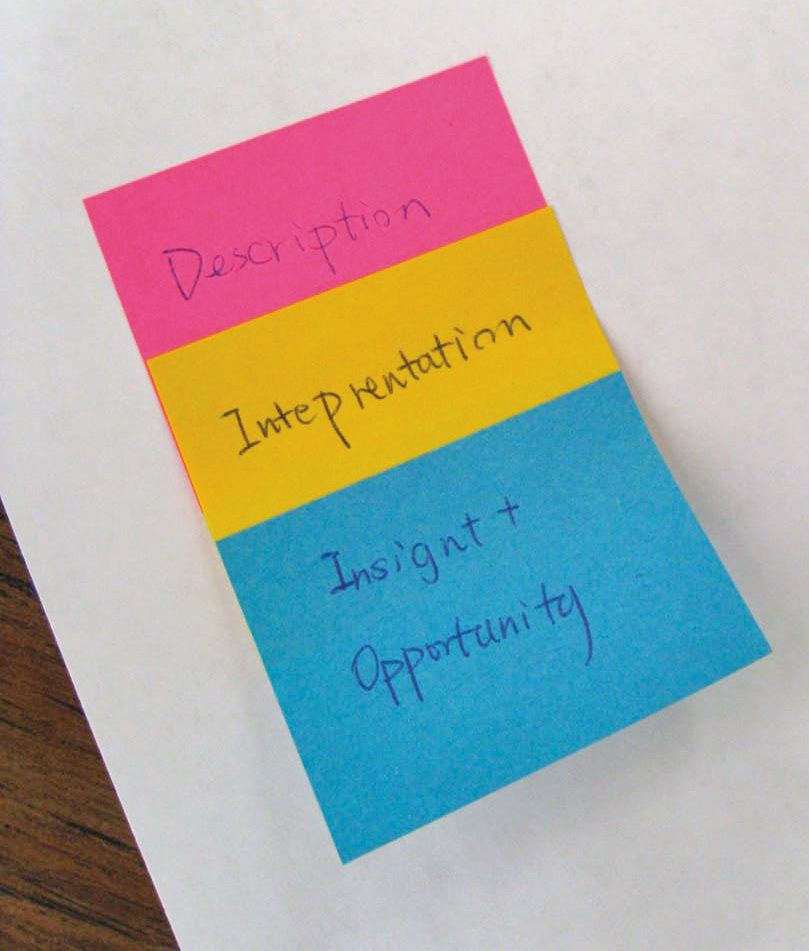


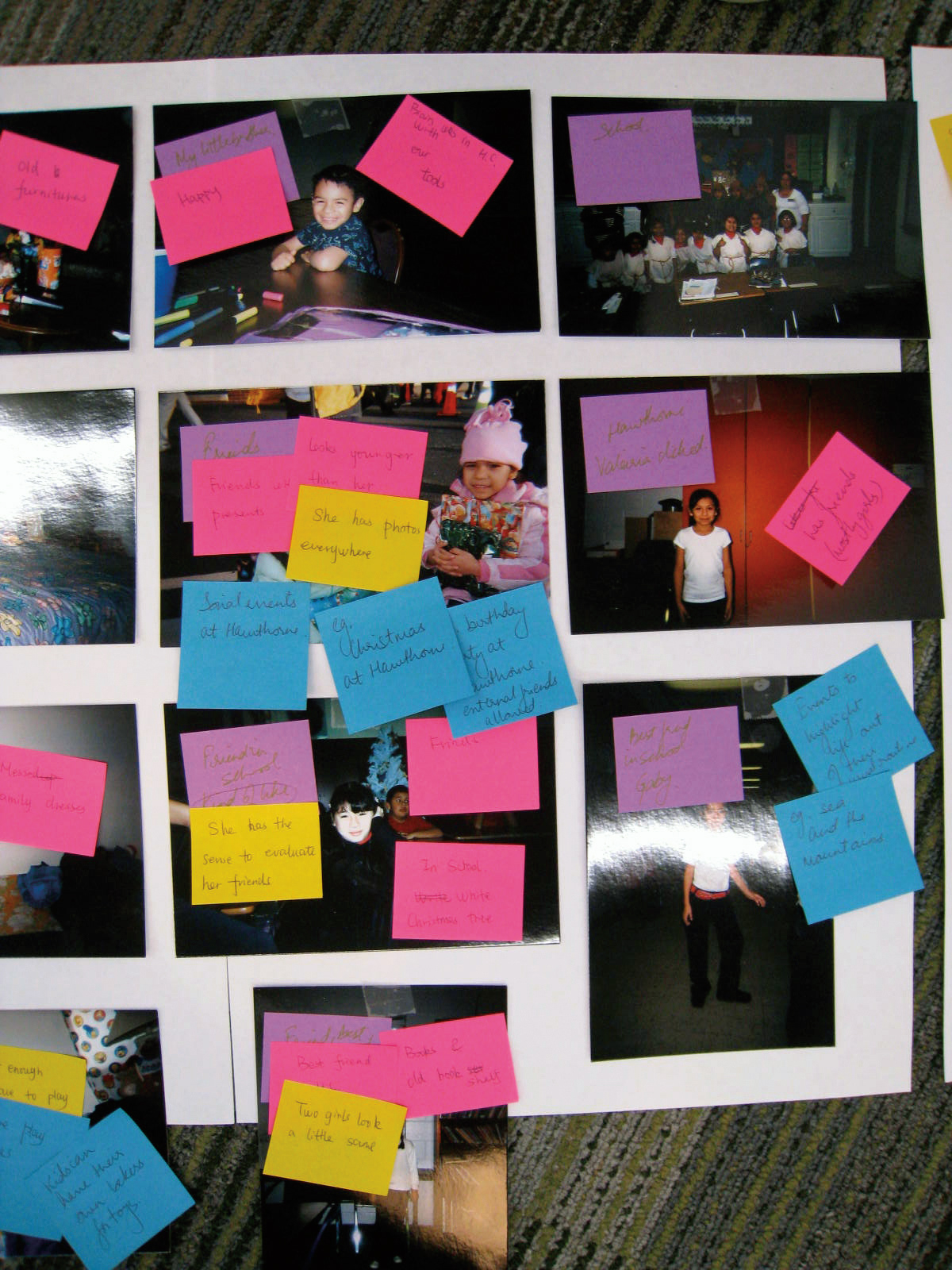

Problem Space
We converged on the problem space by making sense of the various opportunities and problems revealed by each research area. We started by listing and categorizing all challenges and problems. We were also able to find patterns and draw connections which led to a shared opportunity map for the whole family (pictured below). This included experiences at Hawthorne, in their daily lives, and through family engagement. We found the variety of experiences at Hawthorne were limited. Their daily lives, even on weekends, were extremely restricted by routines and work/school schedules. Their limited experience and routine lifestyle reinforced one another.
Challenge statement
How might Hawthorne provide or facilitate meaningful family experiences?
Proposed Solution Concept
Building from collaborative ideation sessions and iterative prototypes, a solution concept was developed which integrated educational and experiential activities into the families' daily lives. This program intends to target specific learning styles appropriate for a given situation. In doing so, this program will address both applicable knowledge and emotional connections while being mindful of practical constraints.
Proposed Solution
Mutual learning through lived experience is a model for integrating English skills and confidence-building into everyday experience As a result of experiences gained through design research methodologies, this solution matrix is framed within the lived experience of clients in the Working Families Program at Hawthorne Community Center. By using lived experience to facilitate the teaching of English skills, parents will gain much-needed practical knowledge, while children will learn about planning, decision-making and self-reliance.
Planning Document
In addition to my research team, four other teams worked on different service lines and populations at the Hawthorne Community Center. I was responsible for design, coordination, and production of the final document which communicated our process, methods, findings and outcomes. This document is helping Hawthorne and LISC improve and grow service lines and facilities for the community.
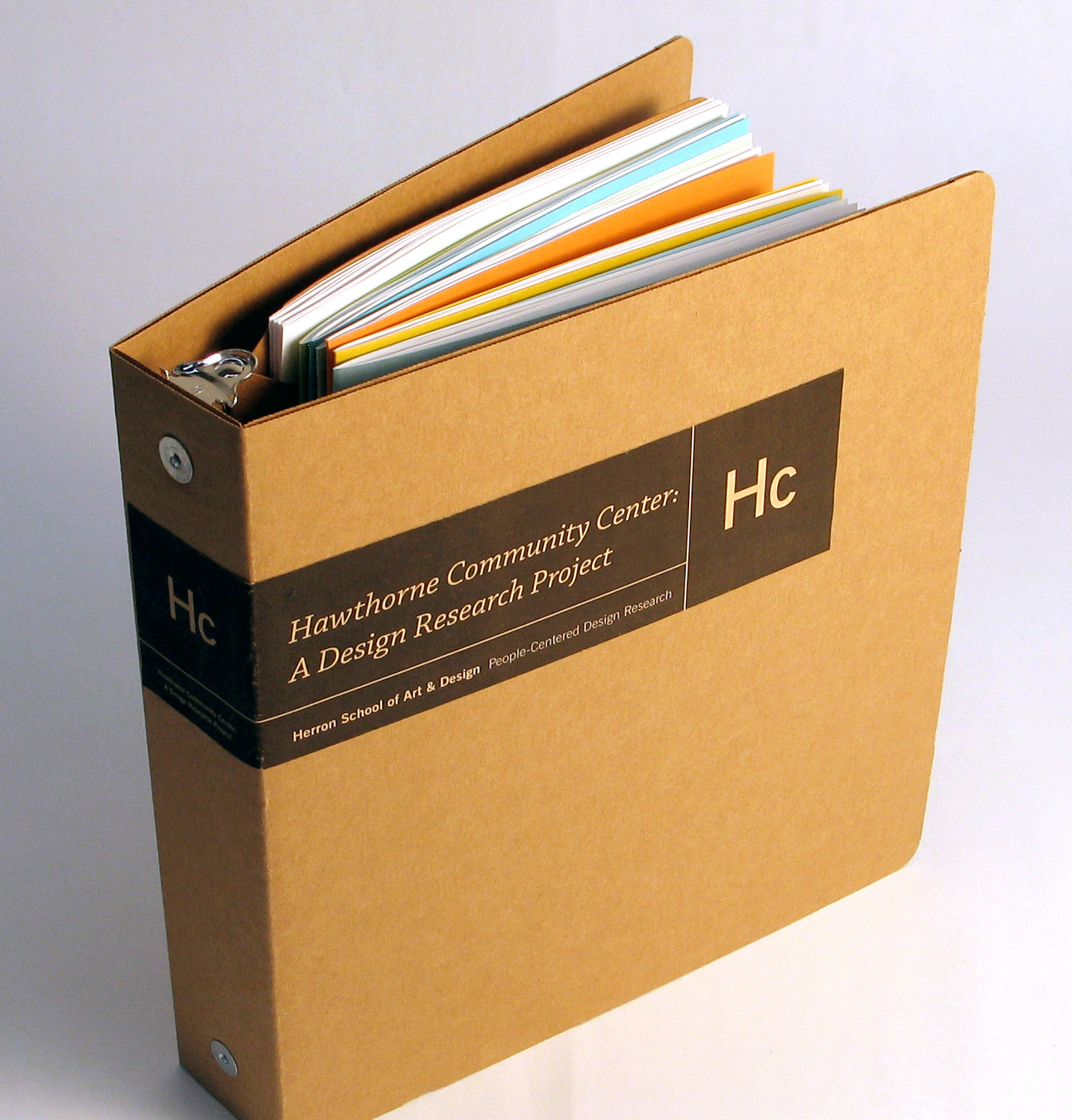
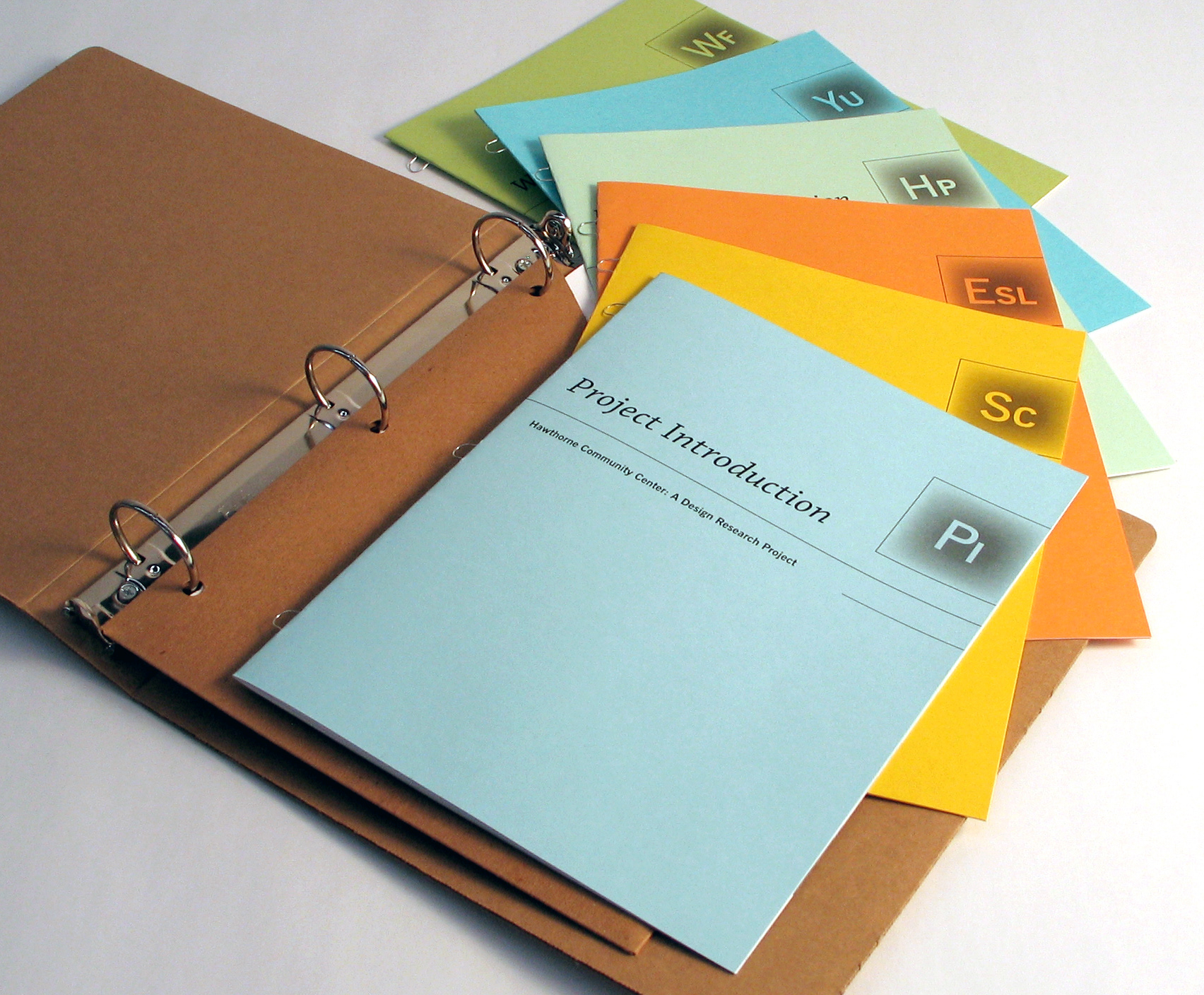
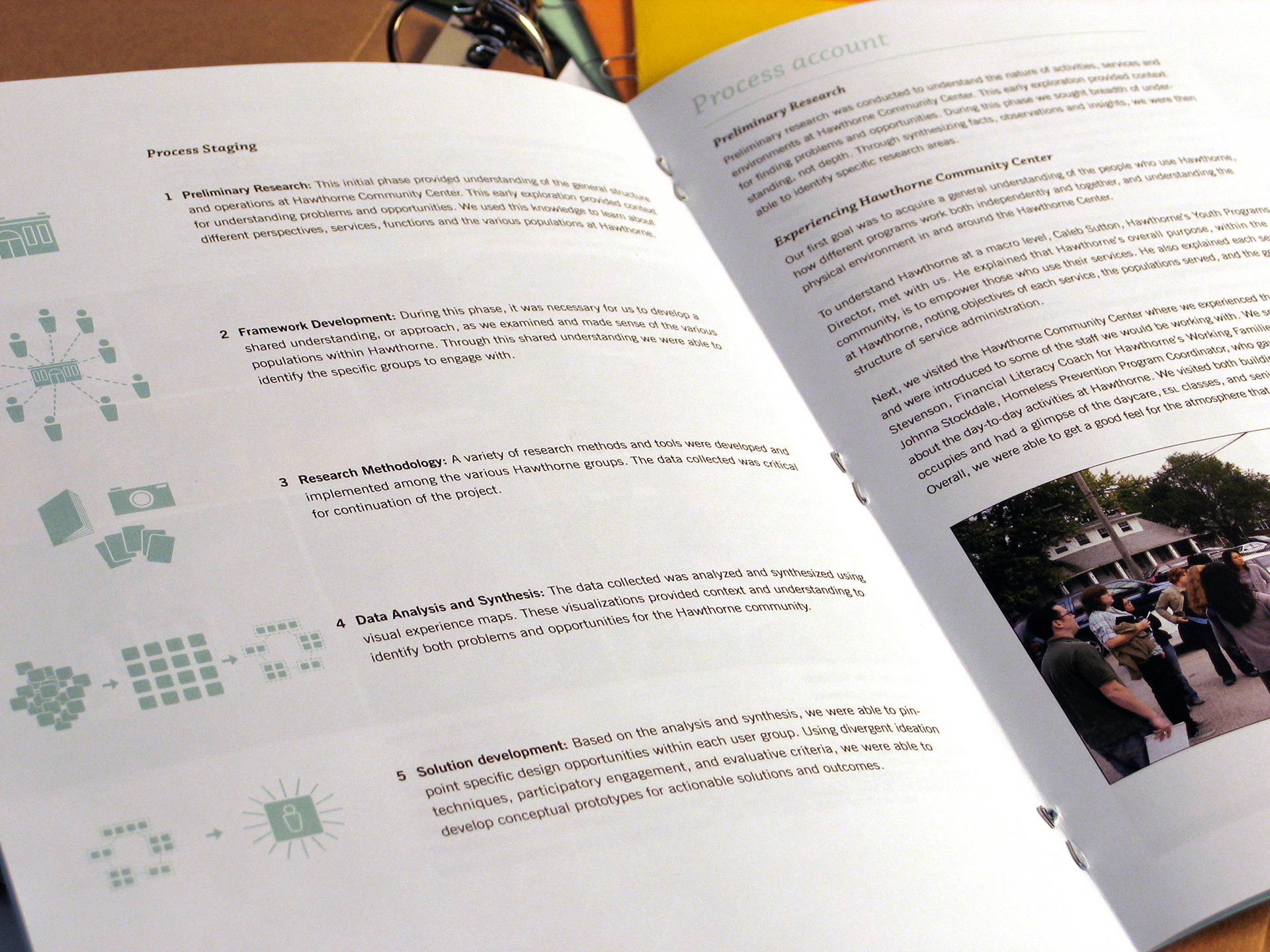
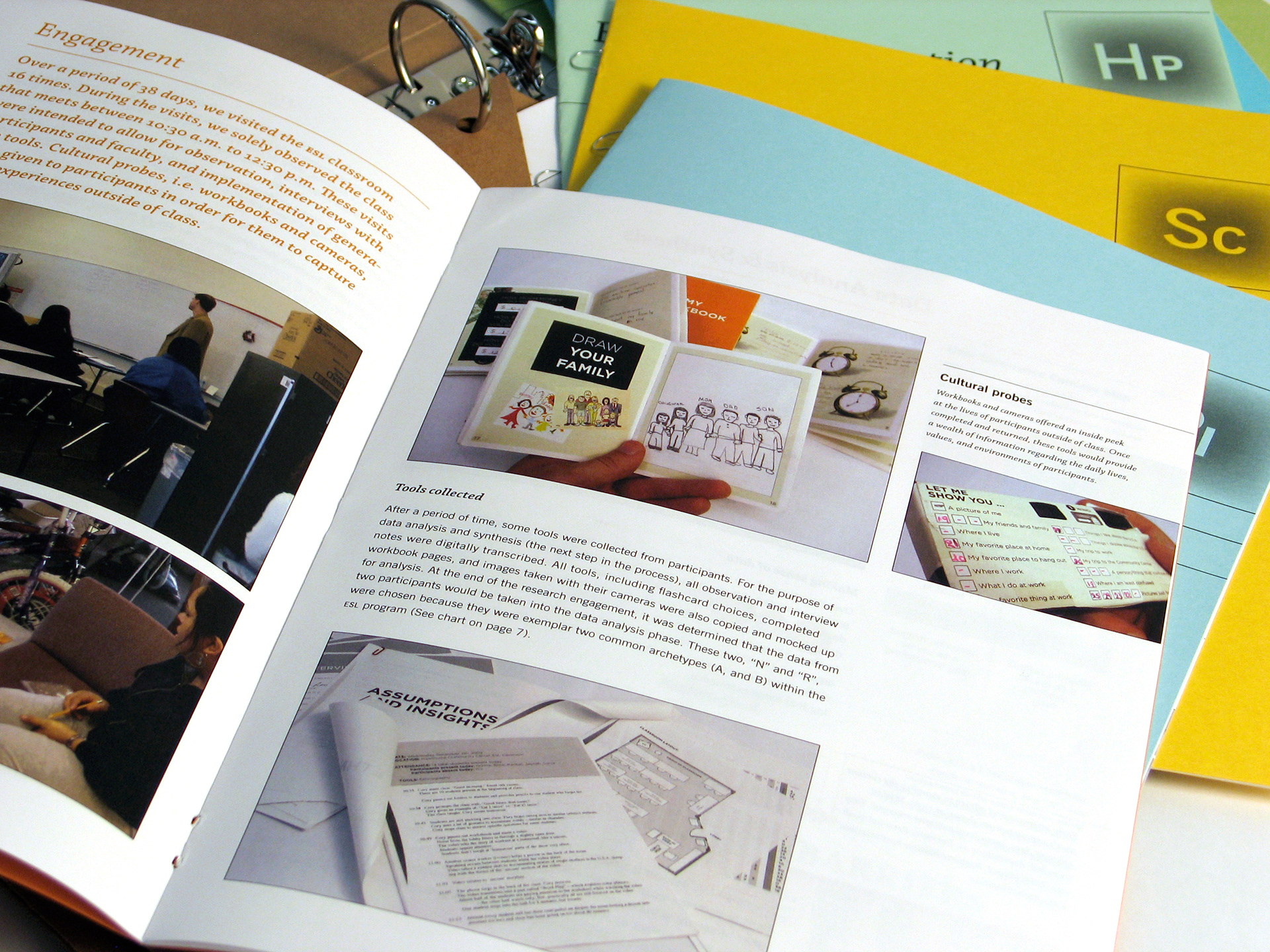
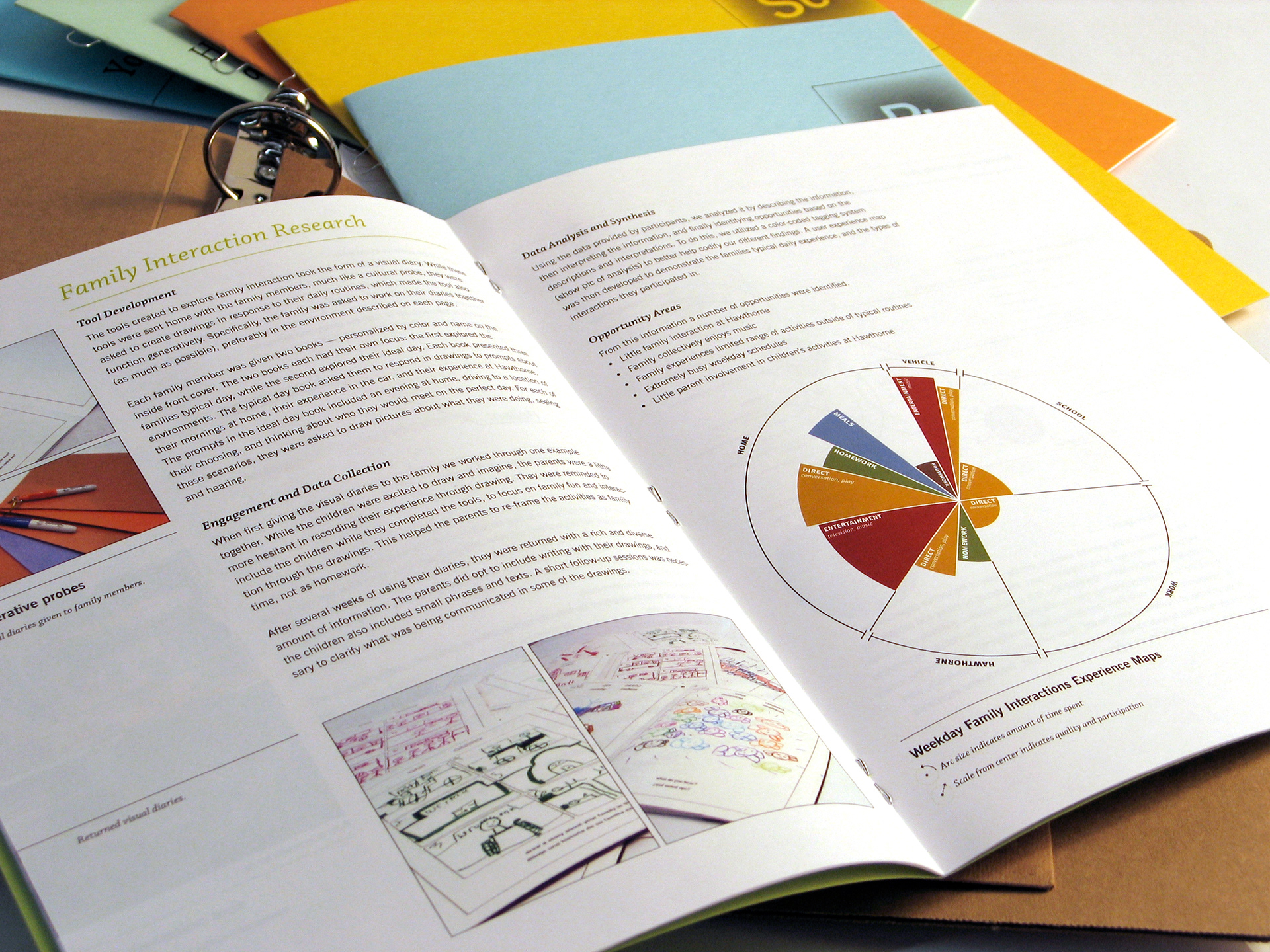
Design Research Team
Stephanie Adams, Gunjan Ahlawat, J Brian Crain, Brandon Cockrum, Anna-Maria d’Ambrosio, Adrienne Dye, Youngbok Hong, Nada Jaffal, Vinay Kashyap, Yiwen Mu, Juhi Singh, Brandon Stuck, Terri Wada